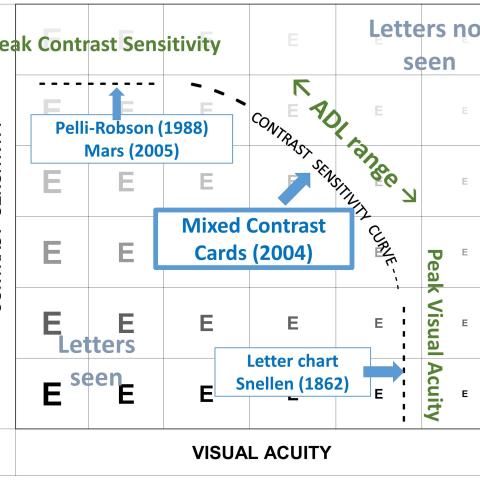
For eye doctors measuring contrast sensitivity loss during routine eye exams is not a priority, since contrast losses are not disease specific and do not guide treatment decisions.
For the patient, on the other hand, knowledge about contrast losses, of which they are usually not consciously aware, is very important, since it may affect the performance of Activities of Daily Living and affect safety in mobility tasks.
When visual parameters are measured, the measurements are usually limited to determining peak contrast sensitivity and threshold visual acuity as separate, seamingly independent, measurements. Peak contrast sensitivity and high contrast acuity (the endpoints of the contrast sensitivity curve), however, do not reflect the conditions encountered in common ADL environments. For ADL tasks visual acuity and contrast sensitivity interact.
Dr. Colenbrander developed the Mixed Contrast format to assess this interaction by measuring the slope of the curve, in the ADL area. High contrast (HC) and low contrast (LC) targets, presented side-by-side on a single card, allow the assessment of the HC-LC difference which is relevant for ADL performance.
Mixed Contrast cards PDF

